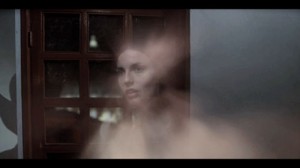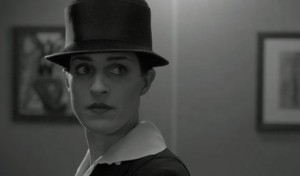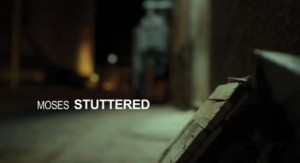Tags
Related Posts
Share This
Short and Sweet
From this year’s Santa Fe Independent Film Festival’s Shorts Program, nine films were selected and screened under the category of New Mexico Shorts. This category required that a portion, if not all, footage be shot in the state. In supporting the origins of the festival, Executive Director Jacques Paisner said that when organizers started their screenings five years ago, they were in fact New Mexico filmmakers, and believed other filmmakers from the state “deserve[d] to play for a full house.”
In his introduction to the New Mexico Shorts Program on Oct. 16 at Santa Fe’s Center for Contemporary Arts, Paisner invited the directors to present themselves to their audience, who ranged from students to seniors. “These young talented people are the future here in Santa Fe,” Paisner said, motioning to the young filmmakers.“It all starts with their vision. At the beginning, we’d often show almost any New Mexico film because we wanted to be supportive, but this year the competition became tougher than we’ve ever seen it. Each film you’ll see is a testament to that.”
Indeed, after the screening was over, I felt—as a film student, a New Mexico resident, and annual SFIFF attendee—that every film demonstrated an inspiring amount of hard work, along with some quirky and enchanting stories.
88 Miles to Moscow, directed by Karen Clienke
SFIFF Description:
Niki may have missed the train, but don’t miss the heart of her story: a mother-daughter relationship in all its beautiful complexity.
For any woman who remembers those uncomfortable talks with an obnoxiously protective mother, Karen Glienke’s 88 Miles to Moscow is relatable and all the more comedic. The film utilizes an interesting technique of cross-cutting between two main scenarios: the young Niki hitching a ride with a strange Russian boy (after missing her train) and Niki lying about it to her mother after the fact. In the first scenes, Niki’s web of lies are constantly intruded upon by the reality of her story. “Sure mom, I sat on the train the whole time,” Niki may have said, while the next cut is of her running after the train. These conversations play out brilliantly, especially with the juxtapositions of sound between cuts—yappy mother, loud train, awkward Russian Boy silences—backed up with a convincing cast of characters. Within a simple glimpse of a young woman’s serendipitous and insecure life, Director Glienke is able to create comedy while invoking realistic drama.
Anomaly, directed by Seth Fuller
SFIFF Description:
Looking for links to his daughter’s disappearance, a 1980’s reporter investigates a desolate southwestern town and encounters far more than he expected.
SFUAD filmmaker Seth Fuller says the story of his film, U46-Anomaly, came out of “an obsession with The X-Files as a child.” Indeed, the eerie and mysterious atmosphere of the story of a missing daughter, and a father determined to make sense of her disappearance, comes across through moments of repetitious symbols and images. For example, in the film, the reporter’s cigarettes are often seen on the ashtray in his hotel room, piling up. While the action builds toward the reporter’s supernatural experience, the cigarette smoke in the ash tray is suddenly sinking instead of rising. It was these small, but important, details that transported the audience into a modern fairy tale.
Cibola, directed by Daniel Augustin Grignon
SFIFF Description:
1864-NEW MEXICO TERRITORY: While the Civil War rages in the east, a Confederate renegade embarks on a mythic trail of stolen Union gold. Rival bounty hunters vie to claim the riches and the Red Rebel’s scalp. There is no law here but the law of man. It is a time of gold. It is a time of Cibola.
I believe this film was introduced as an experimental short, entailing that it broke the rules of story consistency while evoking a sense of conflict. I can say that I was distraught by the over-exposed images of what appeared to be a band of cowboys searching for Cibola, one of the Seven Cities of Gold. I got a sense of the Old West, about young men who are coming into their roles as plunderers and travelers, but I can’t be sure. There was no dialogue, but the actions were supported with an acoustic and foreboding score that kept me wondering whether the next scene would be a Mexican standoff. It wasn’t quite a Mexican standoff in the end, but there was a murder. It might be fair to say that one must see the film for oneself in order to draw any further conclusions.
Eve Angelic, directed by Luca Ceccarelli and winner of the Best NM Short
SFIFF Description:
When Eve takes an assignment to spy on a mysterious Vatican Intelligence Service meeting, she suddenly finds herself the target of dangerous forces inside the church.
The screening of Luca Ceccarelli’s short, Eve Angelic, was in fact a premiere screening of a feature film in the making. Working on a bigger budget, Ceccarelli’s story of a “psychic viewer” who leaves her body to conduct spy operations, utilized stunning visual effects and conjured an overall sci-fi atmosphere that came across through its attention to makeup (Eve’s ghostly face), costume (the cardinals of the vatican) and set design. The Vatican scene, in particular, was constructed with a gothic atmosphere that used light and shadow to reflect the themes of angels and demons.
Looking for Mr. Stieglitz, directed by Steve Zeifman
SFIFF Description:
Modern art meets the Harlem renaissance at 291 Fifth Avenue, where Georgia O’Keeffe, who is looking for Mr. Stieglitz, encounters the unexpected.
First off, it was a little disorienting to find Georgia O’Keeffe in a modern-looking setting that was suppose to be the 1900s. That aside, I believe the story of O’Keeffe’s chance meeting with a mysterious gallery worker was original, but dramatically under-developed. For example, because the setting is mostly inside this gallery, I was expecting large amounts of character development using inserts, reaction shots, personal details that went further than abstract dialogue with an overly dramatic score. I did, however, appreciate the role of the gallery worker whose role in the story was presented as mentor and wise father. Because of his wonderful presence in the film, I believe that the story should have ended with O’Keeffe leaving and the gallery worker remaining to sweep the floor. Symbolically, this would have made more sense, because the gallery worker is the intrigue of the story. Instead, the audience got an earful of Georgia O’Keeffe’s personal history that was unnecessary for the focus of this short.
Moses on the Mesa, directed by Paul Ratner
SFIFF Description:
The story of Solomon Bibo, a Jewish immigrant who became governor of a Native American tribe during the days of the wild west.
The locations, costumes, cinematography and set design were impressive in Ratner’s short Moses on the Mesa, but I think the film was lacking in two important details: character and story. Despite the fact that the plot was based on real events surrounding the life of a Jewish immigrant who became governor of a Native American tribe, the elements of conflict and character were weak and difficult to invest in. It is perhaps dangerous, in the venue of film shorts, to try and fit too many events, too many facts and just overall too much stuff in a small amount of time. Much is lost. I will say, however, that the locations couldn’t have been more appropriate for a film on New Mexico history.
Moses Stuttered, directed by Todd Lovato
SFIFF Description:
Music video by Todd and the Fox and Lindele Media for the song ‘Moses Stuttered.’
Director Todd Eric Lovato described his music video as “an existential romp that follows a small cast of characters as they overcome darkness and find redemption through discovery of their inner fox.” Our three main characters, from three different locations, begin with a conflict. What is that conflict? It doesn’t even matter because a mystical banjo-playing trickster will bring them to the light! Symbolism, heart and music combined harmoniously in this glimpse into the mystery that is Fox and its clean and well-crafted narrative was fresh and interesting. For that, I commend Director Lovato.
#nightslikethese, directed by Hannah Macpherson, co-directed by Shay Eyre and Amber Midthunder
SFIFF Description:
Rowan and Cali, two fifteen-year olds, sneak out to visit Rowan’s crush, an older man who works at a gas station. When the night’s escapade takes a disturbing turn for the worst, we learn just how disconnected and desensitized social media has made these troubled teens.
This story was a wake up call, a message to all teens about the dark powers of social media. I believe it is films like #nightlikethese that leave an impression on audiences because, despite some hyperbole, they are all too believable. Maybe not the best paced short film, but the characters and the settings of #nightslikethese made the circumstances authentically suspenseful. I will be remembering this film whenever I get too wrapped up in social networking.
The Brazilian, directed by Lindsy Campbell
SFIFF Description:
Comedy about a girl (Polly) who is convinced by her best friend (Clair) that a Brazilian bikini wax is a genius way to win the heart of her long time crush.
Lindsy Campbell calls her short a “slap stick comedy” and I agree. There is nothing quite like those moments when you can relate to a character and laugh at the fact that we are indeed all stupidly similar. Moral of the story? Even the small tasks in life are a pain in the butt. Well-lit, well-shot, well-casted, I’d give Campbell’s The Brazilian two thumbs up.
2013 Non-Juried Award Winners
John Waters American Filmmaker Award
Wes Studi American Actor Award
List of 2013 Juried Award Winners
Best Narrative Feature: This Is Where We Live by John Barrett and Marc Menchaca
Best Documentary Feature: Tapia directed by Eddie Alcazar
Best Narrative Short: Into the Silent Sea directed Anderej Landin
Best Short Animation: Josephine and the Roach– Jonathan Langager
Best Documentary Short: Baking Alaska– Kari Barber
Best New Mexican: Eve Angelic directed by Luca Ceccarelli
Santa Fe Reporter Audience Choice Feature “YAY” Award: Tapia
Honorable Mention to Perfect Strangers by Jan Krawitz
Audience Choice Short: Record Breaker by Ryan Velasquez















 Jackalope Magazine is the student magazine of Santa Fe University of Art and Design. Building on the interdisciplinary nature of our education, we aim to showcase the talent of our university and character of our city.
Jackalope Magazine is the student magazine of Santa Fe University of Art and Design. Building on the interdisciplinary nature of our education, we aim to showcase the talent of our university and character of our city.
Recent Comments